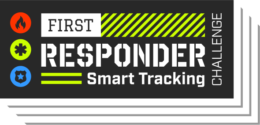Phase 1 FAQ
At least one team member must register on the FRST Portal (portal.r2network.com/FRST/) to submit project deliverables. It is advised that all team members register so that they can all receive the benefits of being a part of the FRST community: resources, collaboration, events, and more.
The FRST Portal (portal.r2network.com/FRST/) is a website devoted to the FRST community. In addition to hosting Challenge submissions, the Portal is be a clearinghouse for educational materials and other Challenge-specific information.
FRSTchallenge.com is an outward facing information source about details of the competition with important dates, marketing materials, winner announcements, etc. The FRST Community Portal is a website to be used by competitors to submit materials and enhance their competitive experience.
The official rules for the competition are posted on FRSTChallenge.com/rules.
Partnerships can be made through the FRST portal, outside relationships, or you can reach out to the FRST Challenge team to help your team find a match.
At least one representative from each team must register for the FRST Challenge by completing the online registration form on the FRST Challenge Community Portal.
All submissions for Phases 1-3 must be made through the FRST Community Portal.
All FRST Challenge submissions must be made via the FRST Challenge Community Portal before the corresponding due date for each phase. Submissions will not be accepted via email.
Keep an eye on your email inbox for messages from the FRST Challenge and visit the Events section of the FRST Challenge Community Portal for upcoming events.
Please review the official Challenge rules at FRSTChallenge.com/rules.
- All materials submitted should conform to the specific guidelines provided for each phase in the official rules.
- Each submission must be in English.
- Eligible formats for the evaluation of Phases 2-5 are applications (software), hardware, and text files (e.g., .docx, .pdf). Submissions of any required videos for evaluation must be in .mp4 format.
- Except where otherwise noted, all document submissions must use one-inch margins on 8.5 by 11-inch paper (215.9 by 279.4 mm) (“US Letter”) with a minimum font size of 11-points and single-line spacing. Diagrams and images may use fonts no smaller than 9-points.
Competition FAQ
Every team must have at least one member who is defined as a U.S.-based individual or private entity:
- Individual: a person age 18 or older at time of entry and a U.S. citizen or permanent resident of the United States or its territories.
- Private Entity: a company, institution, or other organization that is incorporated in and maintains a primary place of business in the United States or its territories.
Please review the official rules for more information.
Teams are not eliminated if they are not deemed prize winners in the first two phases. Teams who do not win prize money in Phase 1 may continue in the challenge and enter Phase 2 and/or Phase 3. However, only some teams will be invited to Phases 4 and 5, as there is limited availability for in-person testing.
Yes, individual participants may join existing teams, or new teams may enter the competition for Phase 2 or 3 without having participated in the earlier phases. In fact, we anticipate that many early-round teams’ solutions may be missing certain key components or technologies to be a latter-phase holistic solution. Because of this, is our intention to fully encourage new entrants and team re-assignment during the first three phases.
Phases 4 and 5 are invite-only for our finalist teams.
Participants can initially register as individuals and use the Challenge Portal to find teammates. Team rosters won’t be locked, so there is plenty of time to find collaborators.
Support for this research comes from award 70NANB21H022 of the Public Safety Innovation Accelerator Program (PSIAP) of the National Institute of Standards and Technology (NIST) Public Safety Communications Research (PSCR) Division. The PSIAP utilizes grants and cooperative agreements to stimulate critical R&D for public safety communications technology and provide access to cutting-edge technologies and applications that will enable responders to better carry out their mission to protect lives and property. For more information, visit pscr.gov
The competition has travel funds set aside for teams who are selected for the live field testing in Phases 4 and 5.
Submissions to this competition may utilize any technology they require; however, teams should consider practicality, cost, and durability (relative to first responder budgets and scenarios) in their designs.
Phases 1-3 require whitepapers and proof-of-concept videos, whereas Phases 4 and 5 are extended to allow more time for solution building, testing, and iteration.
Yes. Precautions will be taken to avoid conflicts of interest in both the submission review and judging processes.
